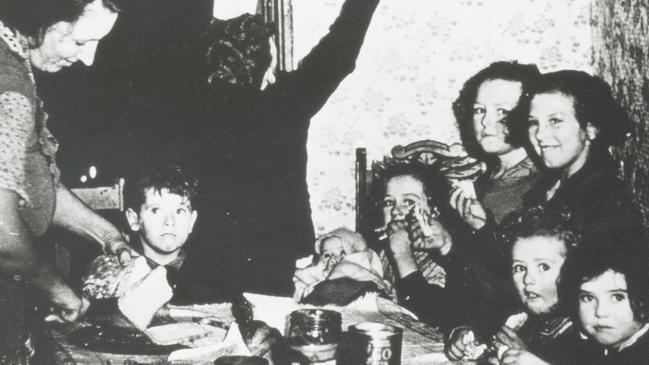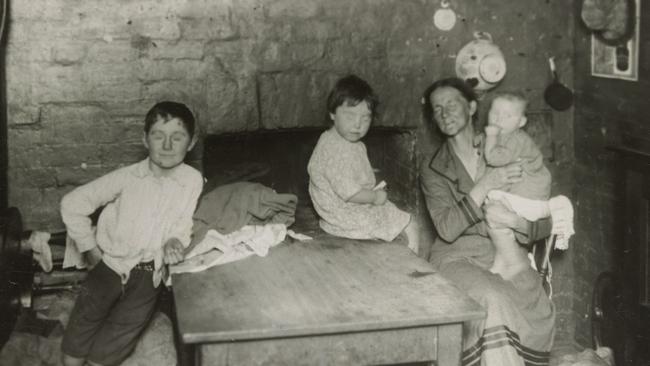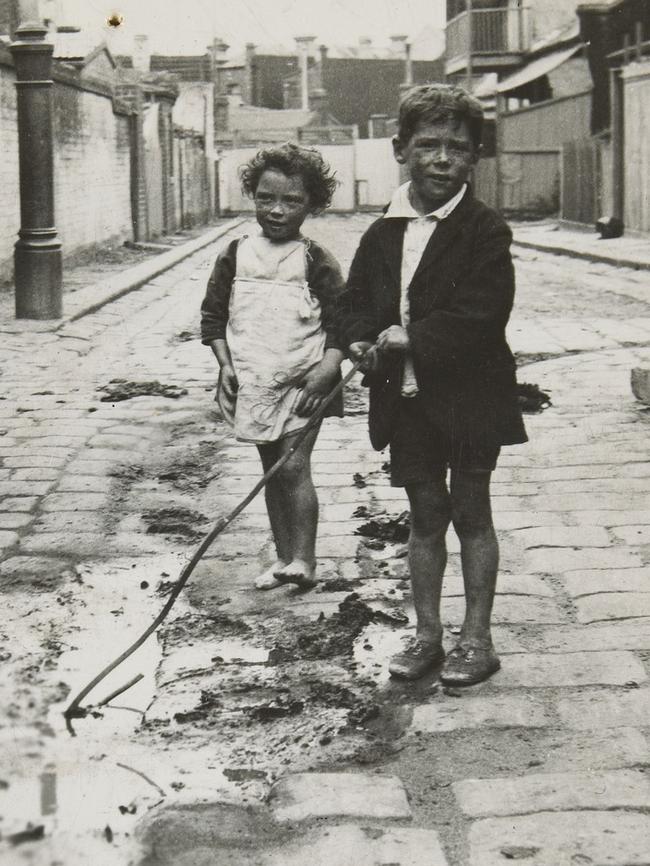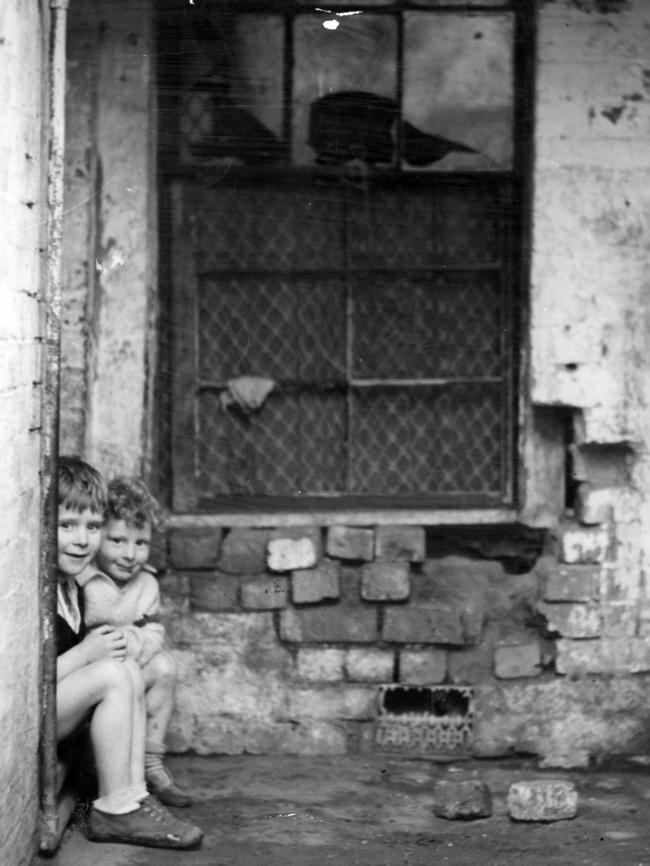New podcast: The shocking images that helped end Melbourne’s slums
From Richmond to Carlton, Melbourne’s inner suburbs were once home to incredible poverty and crime. But one fearless crusader exposed the squalor and helped transform people’s lives. NEW PODCAST LISTEN NOW

Black and White
Don't miss out on the headlines from Black and White. Followed categories will be added to My News.
With its flashy eateries, hipster culture and multimillion-dollar homes, Melbourne’s inner city ring of suburbs is unrecognisable from the Great Depression era.
In the 1930s, unemployment in Melbourne peaked at 30 per cent and many families in the inner suburbs lived in slums where crime and disease were rife.
But it was only when an anti-slum crusader called Frederick Oswald Barnett photographed poverty-struck families living in squalor that the wider public was alerted to the problem.
Barnett’s extraordinary collection of photos of slums including Richmond, Collingwood, Carlton and Fitzroy sparked an outcry that compelled the State Government to improve housing.
Barnett, a committed Methodist, accountant and father of five, is the subject of the latest In Black and White podcast, out today.
A visit to an inner-city slum in 1923 left Barnett deeply shocked, and he began a years-long campaign to improve the lives of people living in slums.


In 1935, he and others photographed and documented families living in filth in overcrowded vermin-infested shacks, often with no bathrooms and holes in walls and roofs.
It was followed by a shocking photo series in The Herald over five weeks called “Why Melbourne Needs Better Houses”.


That series included this snap of a house in Richmond that was condemned, yet still occupied by a family of eight.
The bricks below the window were falling out, leaving a big hole into the kitchen, which meant the house was damp and cold.


Yet amid the misery of the slums, Barnett and his team also found joy as families, and especially children, made the most of dire living circumstances.
One snap showed kids playing cricket in a Richmond alleyway with a makeshift bat and wicket.
Another shows children happily walking down a street with Father Christmas.

Barnett’s photos and others were used as slides in public presentations about the slums and illustrated the Victorian Government’s Housing Investigation and Slum Abolition Board report in 1937.
The report said: “Hidden behind wide, spacious streets there are slum pockets which are hotbeds of depravity and disease”.
MORE: THE BABY FARMER OF BRUNSWICK
VICTORIA’S REAL SHERLOCK HOLMES

Barnett was appointed to the board in 1936 and served as vice-chairman of the Housing Commission from 1938 to 1948, where his work helped shape a more compassionate housing policy for people living in poverty.
Subscribe to the podcast on iTunes here on Spotify here or on your favourite platform.
Read more on the earlier episodes, from the slum boss and her relationship with Richmond great Jack Dyer, to the one-legged gang that ruled Melbourne’s streets.
Check out In Black & White in the Herald Sun newspaper Monday to Friday to see more stories like this.
